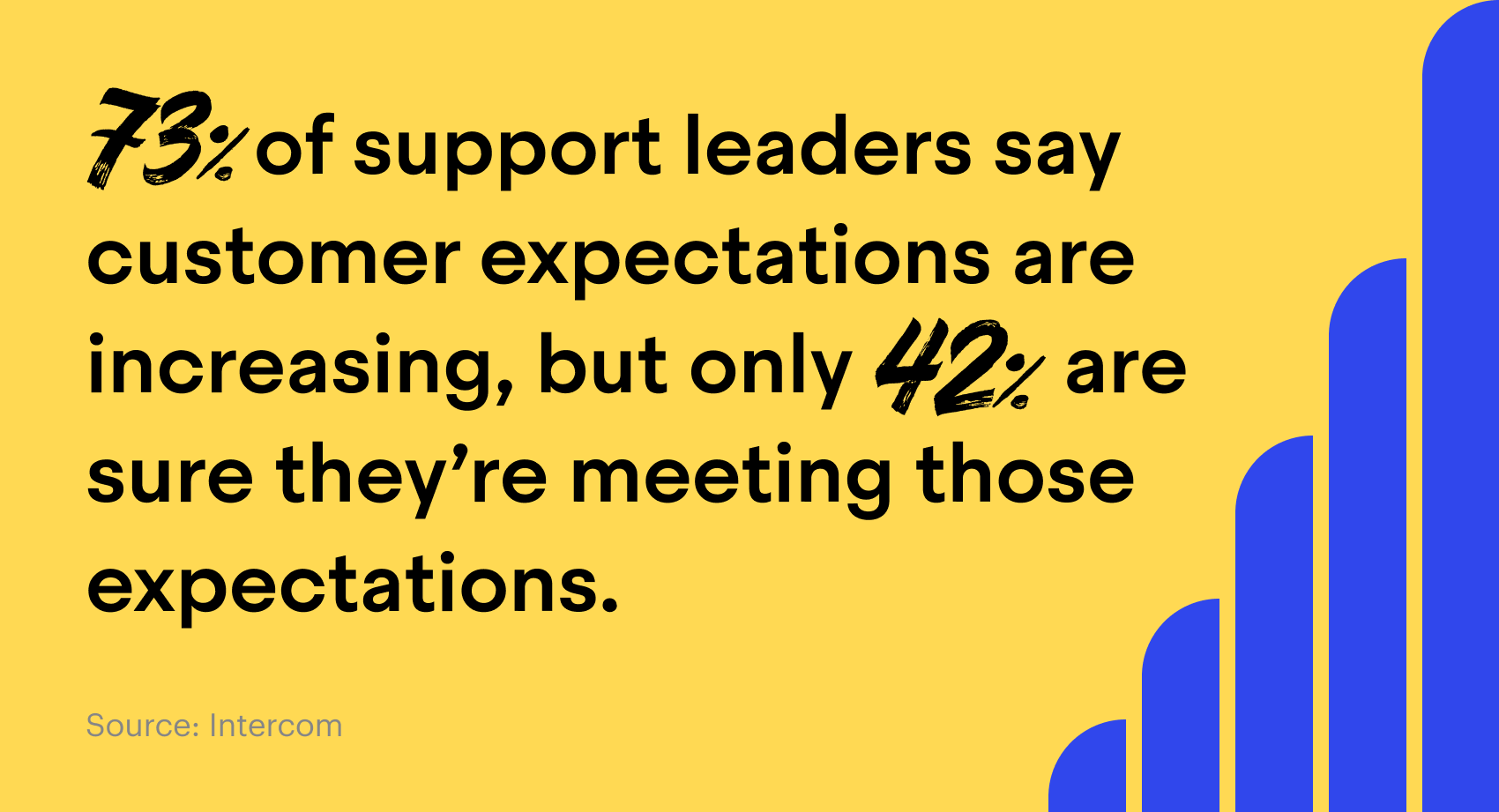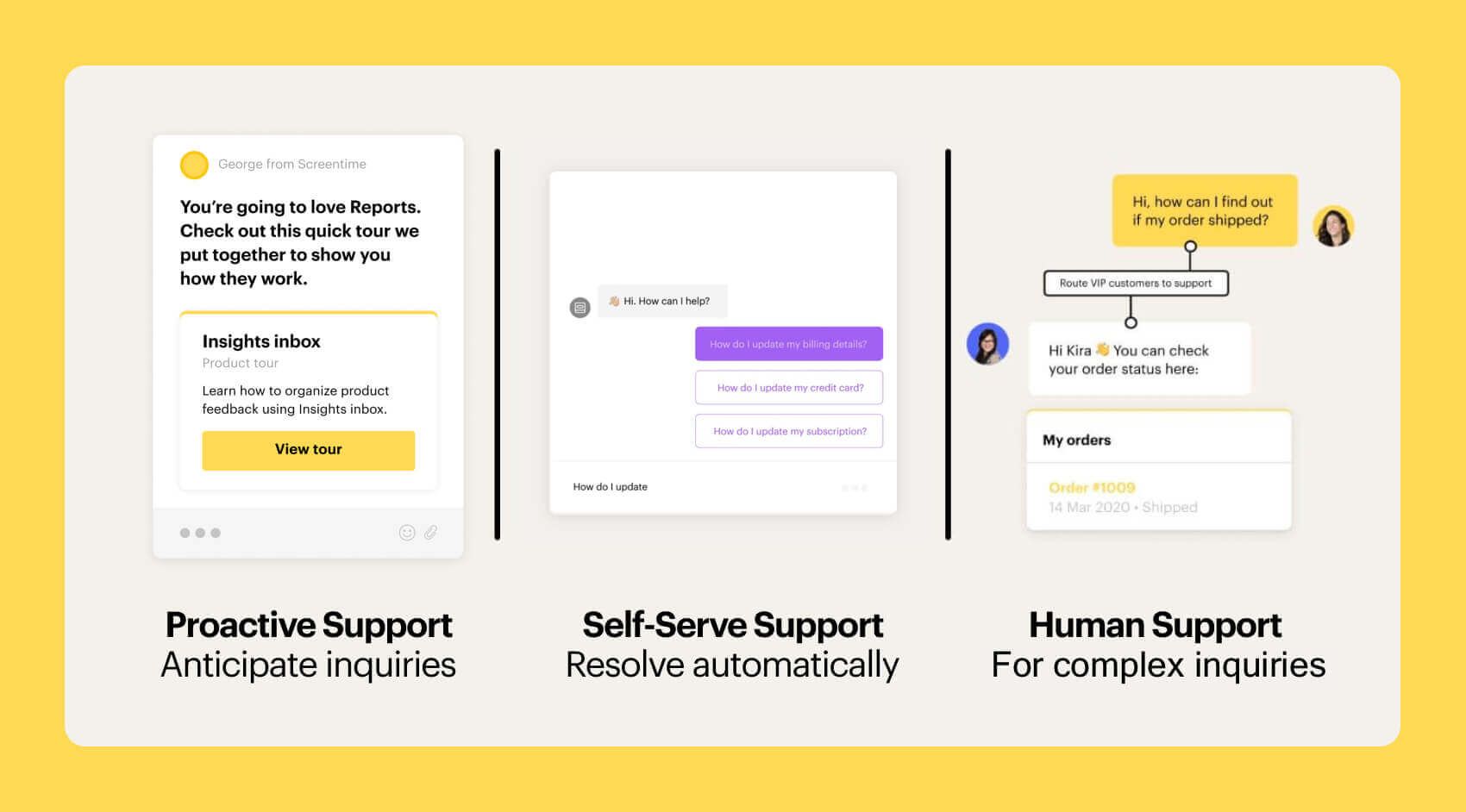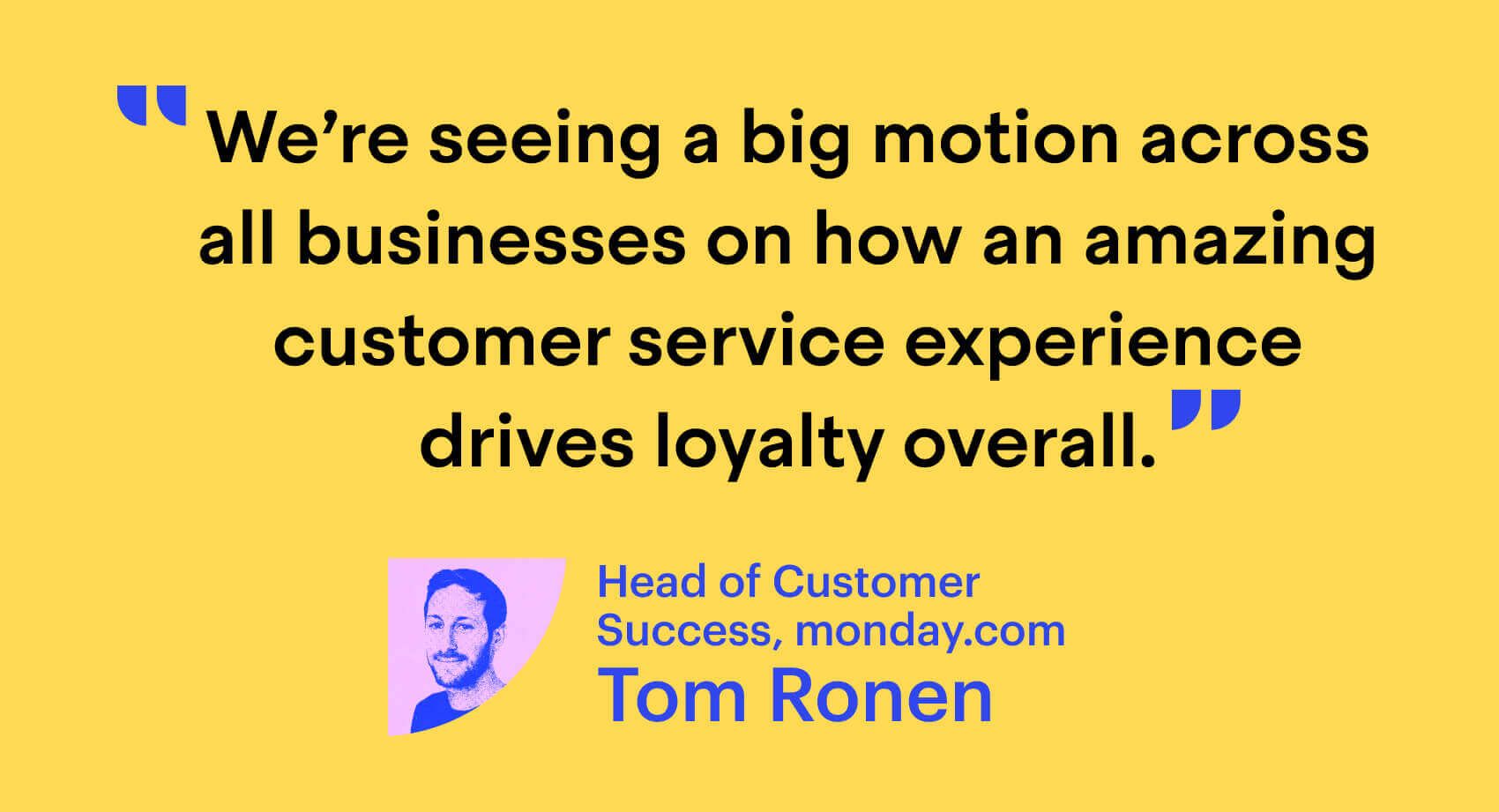
The end of “good enough” – and the rise of conversational support
Main illustration: Jason Yim
Support has changed in innumerable ways, from the emergence of call centers (yes, phones were novel once) to the shift to social media. But one thing has not: what customers want.
As consumers ourselves, we’re all too familiar with what our customers want – a convenient and personalized support experience. There’s little more frustrating than finding out you’re ticket #372876 or being subjected to Cisco’s “Opus No. 1,” the anthem of waiting on hold.
But until recently, businesses have had to settle for “good enough” customer support. You know the kind: chatbots that give off-topic responses, live agents who rush through requests in order to hit volume targets, and personalization that’s just a few pre-populated fields in disguise.
Today’s customers expect, and are demanding, more – and that’s exactly why we’ve leaned into conversational support at Intercom. Conversational support engages our customers with a messenger-based experience that’s at once personal and efficient.
“Conversational support engages our customers with a messenger-based experience that’s at once personal and efficient”
It’s enabled us to build strong customer relationships, from our earliest days to now. Just ask our customers: even during this challenging year, we’ve maintained a +96% CSAT score. Like so many support teams, we are continuing to learn and evolve and it’s this kind of positive feedback that lets us know we’re on the right track.
By embracing conversational support, every business can do the same. It’s time to trade in yesterday’s disjointed experiences for new conversational ones. The result? Happier customers and a happier support team.
Out with the old: disjointed customer experiences
I’ll get straight to the point: most customer support experiences leave a lot to be desired.
As support leaders, we’re well aware of this. There’s a gap between what we know and what we’re able to deliver. In Intercom’s survey of nearly 600 support managers, 73% said customer expectations are increasing, but only 42% were sure they’re meeting those expectations.

Our efforts to provide support everywhere, in every possible way, have only made things worse. Phone, email, forms, social, SMS, chat – we’ve all heard the rallying cry to add more channels, faster. Gartner’s Advisory Director Devin Poole calls this the drumbeat of support organizations: “If you want to keep up, keep adding.”
“The reality is customers want resolutions, not increasingly complex ways to contact support”
But the reality is customers want resolutions, not increasingly complex ways to contact support. Contrary to oft-touted advice, CEB (now Gartner) found 84% of customers would rather have a straightforward solution to their problem rather than a menu of service channels to choose from.
Disjointed support experiences are drowning our teams in work, across too many channels and at higher costs, and they’re driving our customers away. We don’t need more ways to support customers; we need a better way.
The rise of conversational support
Conversational support is the key to bridging the gap between what customers want and what we can deliver. It’s the next generation way to provide customers with the personalized and convenient help they expect, through a messenger-based experience.
Using a business messenger – for us, that’s Intercom – enables you to help customers where and when their questions arise. Yes, I mean in your product and on your website. Remember, questions typically arise when customers are trying to do something and can’t.
“Think of a messenger as a hub where customers can get everything they need to solve their problems and, in most of cases, all on their own”
Messengers are so much more than live chat. Think of them as a hub where customers can get everything they need to solve their problems and, in the majority of cases, all on their own. You can proactively share updates, like we did around business continuity. You can point to FAQs in your help center and use chatbots to instantly answer common questions. When issues get complicated, that’s when a support rep can follow up with the customer asynchronously and, better yet, they can seamlessly help multiple customers at once.

We use a framework called the Conversational Support Funnel to put this new way of helping customers into practice. It has three distinct layers: proactive, self-serve, and human. It’s designed to pre-emptively address known issues and automatically resolve common ones, so your support team can focus on the high-value problems that are the best use of their time and expertise.
These messenger-based interactions feel lightweight, friendly, and seamless. They make getting self-serve support, a sometimes clunky experience, as approachable as messaging co-workers on Slack. And when customers do need to talk to your team, you can easily set the right upfront expectations. That’s what we do – chatbots let our customers know when we’ll be in touch.
By reducing friction and increasing satisfaction, conversational support builds up customers’ trust and long-term loyalty to your business.
Better for your customers, better for your team
I’ve long advocated for support as a value driver, not a cost center. Modern support should provide your customers and your team with an efficient, productive experience that is both enjoyable and scalable – the kind of support that improves your bottom line.
The end of “good enough”
Let me be clear: “good enough” support simply isn’t good enough anymore. Regardless of whether they’re shopping for themselves or for a business, the vast majority of customers (76%) expect companies to understand their needs and expectations. If you don’t deliver, a full 57% will switch to a competitor that provides a better experience.

Conversational support is the antidote to “good enough.” Using a business messenger, support teams are more informed, more efficient, and more empowered to offer top-quality resolutions. At Intercom, automation in our team inbox – saved replies, article suggestions, apps – has been a game changer for how we deliver a good support experience. The outcome: happier customers who are here to stay and grow with us.
Great support, at every scale
Conversational support solves a perennial problem that all support leaders face: do more with less. Like many businesses, when COVID-19 first emerged, we found ourselves facing a surge of questions from customers who were understandably stressed. Combined with an indefinite move to working remotely, support teams around the world are facing increased pressure.
“With conversational support, you can scale your ability to answer more questions from more customers without increasing headcount”
With conversational support, you can scale your ability to answer more questions from more customers without increasing headcount. Self-serve support in the messenger (think chatbots and automation) gets customers fast answers to common questions, while reserving your team’s capacity for more complex issues. Last year, we saved $400k with support automation.
Higher morale, lower turnover
Dealing with a seemingly endless queue of customer questions? Pile on rising expectations and a few angry customers, and you’ve got a recipe for burnout. The worrying reality is support teams have a notoriously high turnover rate – in US contact centers, that rate is 30-45% annually.
But it doesn’t have to be this way. Conversational support empowers your team to focus on high-value, impactful work. We leverage the messenger to proactively anticipate customer concerns and then automatically resolve mundane, repetitive questions. That’s more time with customers who really need one-on-one support and greater job satisfaction for our team.

It’s time to change the conversation
For too long, “good enough” customer support was just that – good enough. But that simply doesn’t cut it anymore: your customers’ expectations are higher than ever and they aren’t waiting around for you to get on board. With conversational support, you can now achieve what once seemed near to impossible – an experience that not only improves customer loyalty but also the workload and wellbeing of your team.
Ready to change the conversation? Check out the Conversational Support Funnel and get a powerful framework to transform your customer support.







